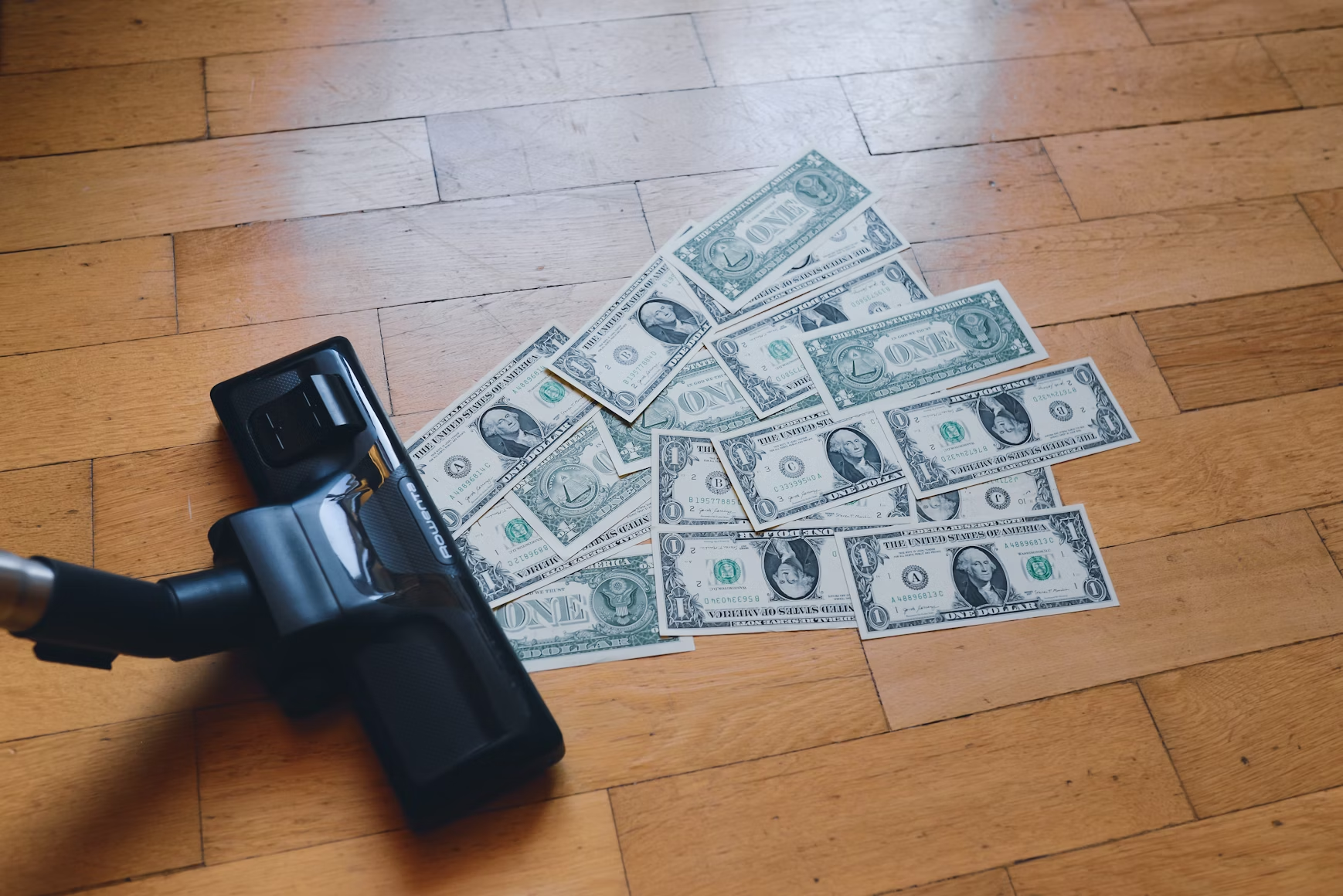
Yusuf Shurbaji
June 21, 2023
|
8
min read
Ecommerce is a highly competitive industry, often because potential customers just don’t know who to trust. Successful ecommerce businesses use every tool possible to increase customer trust, thereby boosting conversion and customer loyalty at the same time.
One of the easiest and most effective ecommerce tools available are trust badges. Let's break down what trust badges are, how they work, and how your brand can use them to positively impact user confidence and conversion rates across the board.

Trust badges are distinct, recognizable icons that immediately give users a reason to trust your brand. They are symbols, widgets, or other placeable icons that represent one or more different services, values, or guarantees you provide to your potential customers.
You’ve probably seen trust badges on many of the sites you’ve patronized over the last few years. For example, one of the most common trust badges – a shield icon with a checkmark in the center — is a popular security trust badge indicating that the website is secure, trustworthy, and uses encryption protocols (such as SSL certification via an SSL badge) to protect consumer data during transactions.
In other words, trust badges — also called trust seals — are seals of authority, authenticity, or trustworthiness.
Many brands put trust badges on their websites to:
Trust badges are more crucial than ever. Visitors are more likely to exit your website without making a purchase, especially if they're not given a reason to trust your brand over another.
By placing trust badges in the right places and using the right trust badges, you can optimize your site for conversion. For example, a trust badge near an add-to-cart button or during the checkout process may convince customers to use their credit cards for a new purchase, minimizing session abandonment.
Some of the most trusted badges, such as those from review platforms like G2 or Capterra, can positively impact time on site, number of products viewed, and purchase rate.

There are five core types of trust badges that can add practical value to your site. Let’s break down these trust badge types one by one.
Safe checkout badges are arguably the most important. They indicate that your site is secure and safe to use and that the traffic to and from checkout pages and consumer computers is encrypted to stop customer data from being stolen.
Secure or safe checkout badges are seals given up when your site works with a company that offers SSL certification. Secure Socket Layer certification protects Internet connections and information shared across encrypted connections.
Many consumers are more aware than ever of the importance of data protection practices and secure online purchases. They are far less likely to make a purchase from brands without a SSL-safe checkout badge of some kind. Because of this, many Ecommerce shops consider at least one safe checkout badge on their site to be a prerequisite to doing business.
When consumers see secure checkout badges, they will be more likely to shop and purchase from your store, no matter your niche or industry. Online shoppers who see a security badge are also likely to feel secure putting their credit card information on your Ecommerce website or using other payment options.
Next, consider implementing accepted payment trust badges on your website. Whenever a visitor sees a recognizable brand on your site, that recognition psychologically extends to your store or business, imbuing your brand with increased trust. For this reason, accepted payment badges from brands like Visa, American Express, PayPal, and MasterCard are excellent additions.
For example, if your site already accepts payments from Visa and MasterCard and online payments from PayPal, mention that by listing those accepted payment badges on your checkout page. In fact, it might even prove beneficial to put those accepted payment badges on your home page or product pages so customers know how you accept payment before they’ve even considered spending any money.
Third-party endorsement trust badges prove credibility for your brand. That’s incredibly important for new businesses struggling to spread brand awareness and build up positive reputations.
Third-party endorsement badges typically come from application and review processes. For example, you can apply for third-party endorsement badges from the Better Business Bureau (to get the BBB Accredited Business badge), Google (for the Google Customer Review badge), and Amazon (for the Amazon Best Seller badge).
Each of these badges tells consumers:
These days, consumers are wary of scam websites seeking to lift their personal information or otherwise commit fraud. By placing a few third-party endorsement badges, you’ll prove that your brand is a legitimate organization and significantly increase trust among your target audience members.
Everyone loves free shipping, mainly because Amazon offers it for all Prime members’ orders. You can potentially sway prospects on the fence or about to make a purchase with the help of free shipping and return trust badges.
Free shipping badges tell customers exactly that: you offer free shipping. Free return badges are also straightforward. Both trust badge types communicate essential, relevant information to your site visitors and imply that your brand offers extra value when they make a purchase.
On a more subconscious note, free shipping and returns badges show your customers that you are extremely confident in the quality of your products. After all, you wouldn’t (in theory) offer free shipping and returns if you expected most of your customers to have a problem with the merchandise after purchasing!
Last but not least are 30-day money-back guarantee badges. These badges are free (i.e., you don’t have to get them from another organization), so you can place them anywhere. Similar to free shipping and returns badges, money-back guarantee badges are a good way to demonstrate your trust in your products.
30-day money-back guarantee trust badges also effectively convince new customers to give your brand a shot if they’re on the fence or haven’t made a purchase at your store before. By removing the fear of wasting or losing money on a purchase, you make it more likely they’ll take a chance on your business.

Now that you know the best types of trust badges to boost conversions on your website, it’s important to understand that slapping a bunch of badges on your homepage isn’t enough to convince customers to purchase products.
You need to use trust badges in the right way; here are some best practices to follow.
For starters, don’t simply collect as many trust badges as you can and throw them all over your website. Too many badges can feel like overkill.
Remember, the point of trust badges is to show prospects or customers that your brand is legitimate and trustworthy and offers special perks, like free shipping. If your homepage or checkout page is littered with the badges, your customers might start to think you’re spitting them out illegitimately.
Of course, all trust badges are indeed sourced from official organizations. But it’s never a good idea to use a trust badge from a legitimate brand, like Google, without actually qualifying for it beforehand. Eventually, your customers may discover this breach of trust, negating the intended effect of trust badges in the first place.
While trust badges often increase credibility and trustworthiness for your ecommerce site, note that some industries might yield different results. This is usually context-dependent.
For example, if you run a site that offers some kind of service — such as marketing services, software-as-a-service, etc. — free delivery and shipping does not matter. If you include one of the free shipping and return trust badges on your site, a keen observer might notice and conclude that your trust badges don’t prove anything at all.
This can inadvertently reduce trust and credibility for your ecommerce brand, so be intentional in using trust badges that are relevant to your website and industry.
If you only have limited time to secure and implement trust badges, prioritize the most important ones. In our opinion, those include safe checkout and accepted payment badges. These two badge types offer increased trust and security for customers above everything else, making your site more likely to secure conversions and purchases than the others.
The best way to use trust badges is to put them in the right places throughout your ecommerce site.
Your homepage and product pages are two great examples of areas that badges can provide positive impact. However, other good places to put trust badges include:
Trust badges are critical, highly effective tools you can and should leverage throughout your site. They can massively improve your conversion rate and are minor additions to your UI that don’t require major site reworks.
If you're uncertain about where to place trust badges or how to implement them, Prismfly can help. As conversion rate optimization experts, we’re optimization experts and ready to help you make the most of trust badges. Contact us today to learn more.

Yusuf Shurbaji
Co-Founder & Managing Partner
Yusuf Shurbaji has over a decade of ecommerce growth experience. His past work includes building optimization departments & running experimentation inhouse and agency side for Dior, JCPenney, LVMH, American Precious Metals Exchange, Princess Polly, Built Brands, Ladder Sport, Maze Group, HelloFresh, Ledger, Blockchain.com, Kind Snacks, and other 9-figure brands. Yusuf is a Co-Founder of Prismfly, a conversion rate optimization agency focused on growing revenue and EBITDA for D2C ecommerce brands. Prismfly is the first CRO focused Shopify Plus certified agency and has seen triple digit growth the past 2 years.
Yusuf Shurbaji





